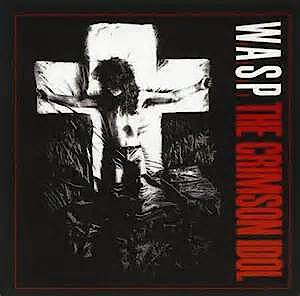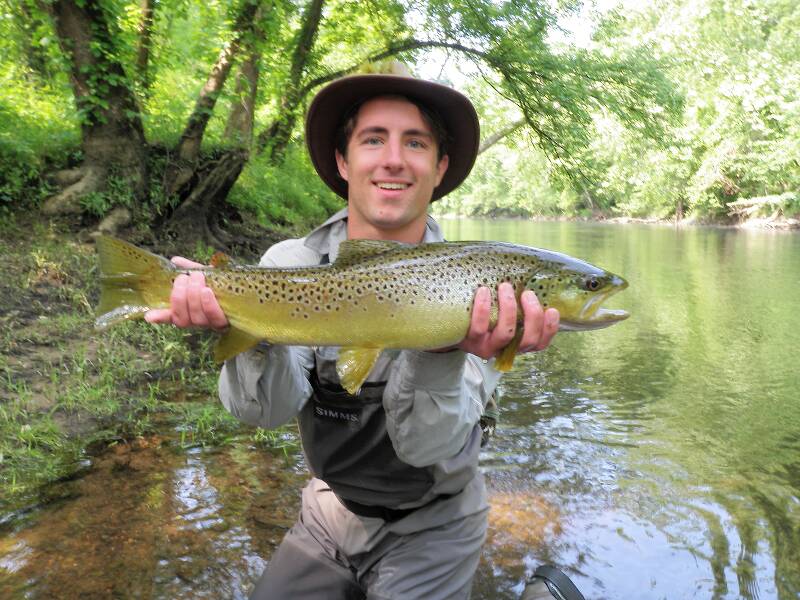
Salmonflies
Pteronarcys californica
The giant Salmonflies of the Western mountains are legendary for their proclivity to elicit consistent dry-fly action and ferocious strikes.
Featured on the forum

As far as I can tell, this species has only previously been reported from one site in Oregon along the Columbia gorge. However, the key characteristics are fairly unmistakable in all except for one minor detail:
— 4 small yellow spots on frons visible in photos
— Narrow occipital spinule row curves forward (but doesn’t quite meet on stem of ecdysial suture, as it's supposed to in this species)
— Short spinules on anterior margin of front legs
— Short rposterior row of blunt spinules on abdominal tergae, rather than elongated spinules dorsally
I caught several of these mature nymphs in the fishless, tiny headwaters of a creek high in the Wenatchee Mountains.
— 4 small yellow spots on frons visible in photos
— Narrow occipital spinule row curves forward (but doesn’t quite meet on stem of ecdysial suture, as it's supposed to in this species)
— Short spinules on anterior margin of front legs
— Short rposterior row of blunt spinules on abdominal tergae, rather than elongated spinules dorsally
I caught several of these mature nymphs in the fishless, tiny headwaters of a creek high in the Wenatchee Mountains.

Troutnut is a project started in 2003 by salmonid ecologist Jason "Troutnut" Neuswanger to help anglers and
fly tyers unabashedly embrace the entomological side of the sport. Learn more about Troutnut or
support the project for an enhanced experience here.
Adirman on Sep 28, 2012September 28th, 2012, 1:02 pm EDT
Guys;
Was wondering what flies are good for salmon fishing during the spawning run. I know alot of the flies I've seen are gaudy colored streamer type patterns: are these good for salmon during the spawning run? I've been told that the best flies are like weighted egg patterns and/or jiglike streamer flies that get down pretty good. Also, should you use a sinking or sink-tip line or just stick w/ floating and add weight? All opinions and/or insight welcome ,
Thanks,
Adirman
Was wondering what flies are good for salmon fishing during the spawning run. I know alot of the flies I've seen are gaudy colored streamer type patterns: are these good for salmon during the spawning run? I've been told that the best flies are like weighted egg patterns and/or jiglike streamer flies that get down pretty good. Also, should you use a sinking or sink-tip line or just stick w/ floating and add weight? All opinions and/or insight welcome ,
Thanks,
Adirman
Sayfu
Posts: 560
Posts: 560
Sayfu on Sep 28, 2012September 28th, 2012, 2:11 pm EDT
Very light sensitive fish especially when the water is clear. They will seek the fastest deep water holes to hide. You definitely have to get down, and that depends on your river, and how fast the water flow is. I would use a sink tip, or sinking line of the length needed. And I have seen when in the Fall clear water conditions when smaller, black salmon type flies work best..say a stout hook #8 size. Early morning before the sun gets up is the best time to get them to eat....evening second best.
PaulRoberts on Sep 28, 2012September 28th, 2012, 2:34 pm EDT
What kind of salmon?
Entoman on Sep 29, 2012September 29th, 2012, 2:48 am EDT
Adir,
I assume transplants of Pacific kings running from lake Ontario? If so, I know zip about what to advise for your locale. What works out West is not necessarily comparable. Hopefully, others will check in.
I assume transplants of Pacific kings running from lake Ontario? If so, I know zip about what to advise for your locale. What works out West is not necessarily comparable. Hopefully, others will check in.
"It's not that I find fishing so important, it's just that I find all other endeavors of Man equally unimportant... And not nearly as much fun!" Robert Traver, Anatomy of a Fisherman
Adirman on Sep 29, 2012September 29th, 2012, 3:23 am EDT
Yes, the Salmon river in Pulaski area was where I was planning on going so I think its mostly Kings and some Cohos and Kokanees.
Sayfu
Posts: 560
Posts: 560
Sayfu on Sep 29, 2012September 29th, 2012, 6:29 am EDT
I was referring to Kings. Silvers tend to hold off the main current in slack water near windfall, underwater obstruction, weedy banks. They can take stripped, bright patterns. One of my most effective Silver flies was a Tarpon style fly that had marabou, flashabou, hackle tips off the aft end, then collared with a shlappen feather, and the entire shank a pink, or orange chenille, and nothing else. Kokanee? Non biters IMO I was assuming you meant Kings.And from my experiences in Alaska, and then on our West Coast rivers, the Native Kings of Alaska bite far better than the hatchery run Kings of the rivers I fished in WA ST. They can be caught, but are not near as aggressive as Alaska's native Kings. I have a theory on that....the biters get caught off over the years regarding hatchery fish, and the non-biters are the ones whose eggs get taken at the hatchery reproducing more non-biters. But all schools of salmon/steelhead have non-biters in the school.
Jesse on Sep 29, 2012September 29th, 2012, 10:10 am EDT
Although i don't have that much experience fishing for salmon, I have had clients of mine ask for a multitude of different egg sucking leach patterns for their salmon adventures. The most popular color they seem to ask for is a purple bodied leech with a pink egg colored head. Other than that i think you pretty much named the game with the egg patterns sunk. Maybe even some bright colored nymphs.
Most of us fish our whole lives..not knowing its not the fish that we are after.
http://www.filingoflyfishing.com
http://www.filingoflyfishing.com
PaulRoberts on Sep 30, 2012September 30th, 2012, 5:35 am EDT
GLs pacific salmon (steelhead excluded) are tough to catch IME. Coho's are easier than chinook, bc they are simply aggressive and they take streamers well, esp if unspooked. This last can be tough to find on most tribs, esp on the weekends. I've even had rotted males -those with flesh hanging off!- chase streamers.
Chinooks can be esp difficult to catch and I mean actually catch and not foul. They are most susceptible when fresh out of the lake, preferably with some silver still on them. On the lower GL's tribs this happens in late August if the conditions (flow levels ) are conducive -which was rare IME.
After this you have to present to a lot of fish to get them to take. A lot of guys, frustrated at the number of fish they can see and not catch, extend their tippet below the weight and are content with fouled fish.
Maybe others have more encouraging things to say. I finally gave up on them ad targeted the trout, and coho's when they were available. Big chinooks are rarely spectacular fighters, like steelhead or coho, more akin to hooking a 55gal drum in current. Exciting at first due to sheer size, but, for me, it grew old. We began to call them "mud sharks" with a disdainful sneer.
Well... sorry for the sour grapes, but I learned to dislike the whole chinook circus when they hit the tribs.
Chinooks can be esp difficult to catch and I mean actually catch and not foul. They are most susceptible when fresh out of the lake, preferably with some silver still on them. On the lower GL's tribs this happens in late August if the conditions (flow levels ) are conducive -which was rare IME.
After this you have to present to a lot of fish to get them to take. A lot of guys, frustrated at the number of fish they can see and not catch, extend their tippet below the weight and are content with fouled fish.
Maybe others have more encouraging things to say. I finally gave up on them ad targeted the trout, and coho's when they were available. Big chinooks are rarely spectacular fighters, like steelhead or coho, more akin to hooking a 55gal drum in current. Exciting at first due to sheer size, but, for me, it grew old. We began to call them "mud sharks" with a disdainful sneer.
Well... sorry for the sour grapes, but I learned to dislike the whole chinook circus when they hit the tribs.
Quick Reply
Related Discussions
Topic
Replies
Last Reply





